Businesses across all industries rely on information technology (IT) as a strategic enabler of growth, innovation, and competitive advantage. For those looking to streamline operations, manage risks, and scale effectively, keeping track of the right IT performance metrics is essential. But what exactly should you be measuring to ensure IT investments deliver real business value?
Let’s break down the key IT metrics business leaders should be monitoring to evaluate the effectiveness of their technology strategies.
Why IT Metrics Are Essential for Business Success
In today’s digital landscape, nearly every business function is supported by technology. Whether it’s launching a new product, securing customer data, or improving internal processes, a well-supported IT infrastructure is vital. IT metrics offer a clear, data-driven view of how technology contributes to performance, efficiency, and security.
Keeping tabs on IT metrics helps businesses:
– Prove the return on IT investments
– Identify inefficiencies and areas for improvement
– Align IT performance with business goals
– Improve risk mitigation through measurable benchmarks
– Guide strategic decision-making with actionable insights
Here are six essential IT metrics companies should be paying attention to:
1. System Uptime and Availability
One of the most fundamental IT metrics, system uptime measures the amount of time systems and applications are fully operational. Downtime—caused by server outages, software issues, or infrastructure failures—can result in lost productivity, customer dissatisfaction, and lower revenue.
Maintaining a high level of availability, typically 99.9% or higher, ensures that critical business systems remain accessible to both internal teams and external customers. High system uptime supports business continuity, strengthens customer trust, and minimizes operational disruption.
2. Mean Time to Resolution (MTTR)
MTTR measures the average time it takes to resolve IT issues after they’re identified. A low MTTR reflects the responsiveness and efficiency of your IT support. Faster issue resolution helps maintain workflow continuity, boosts employee productivity, and reduces the impact of unexpected technical problems.
High-performing IT support teams aim to detect and correct problems as quickly as possible, minimizing interference with day-to-day operations.
3. IT Spend
IT spend is an important financial metric that allows companies to track how IT budgets are allocated and determine whether expenditures align with business priorities. This includes hardware and software costs, support services, security investments, and more.
Analyzing IT spend helps identify unplanned overages or inefficiencies, empowering business leaders to fine-tune budgets without compromising technological capabilities. Generally, companies should aim to stay within 90–100% of their allocated IT budget, with clear documentation to justify any overspending.
4. Customer Satisfaction Scores (CSAT)
Customer satisfaction scores, often gathered through post-interaction surveys on a 1–10 or 1–5 scale, reflect how well IT services and support align with user expectations. For internal users, strong CSAT scores indicate that systems support productivity and minimize friction. For external customers, smooth digital experiences and quick resolution of tech issues build trust.
Regularly monitoring CSAT scores helps organizations understand how IT contributes to the overall customer and employee experience while identifying opportunities for improvement or innovation.
5. Cybersecurity Incident Metrics
In an environment of rising cyber threats, tracking security performance is more important than ever. Monitoring how often breaches occur—along with how quickly they are detected and resolved—offers insight into the strength of your cybersecurity posture.
Key indicators include:
– Mean Time to Detect (MTTD): How long it takes to identify a security threat
– Mean Time to Contain (MTTC): How quickly the threat is addressed and neutralized
Fewer incidents and rapid response times show that risk is being managed effectively, supporting compliance, data protection, and reputation management.
6. Project Delivery Timeliness
The ability to deliver IT projects on time and within budget directly reflects effective planning and execution. Late or over-budget projects can stall business growth, disrupt workflows, and waste valuable resources.
Tracking the percentage of IT projects completed on schedule and within budget provides a clear measure of IT team performance and their alignment with business objectives. It also enables businesses to plan future initiatives with greater confidence and accuracy.
Evaluate Your IT Performance with Cytranet
When IT metrics are tied to your company’s broader business objectives, the data becomes more than just numbers—it becomes a foundation for confident decision-making. Assessing the right metrics helps you refine strategy, reduce waste, and unlock the full value of your technology investments.
At Cytranet, we help growth-focused businesses create IT strategies that generate measurable results. Our proactive IT services are centered on metrics that matter—from system performance to security, to cost optimization.
Want to see how your IT performance measures up and where there’s room for growth?
Schedule a consultation with Cytranet today and discover how to transform your technology into a powerful tool for success.


